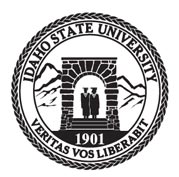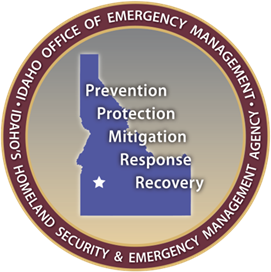- ▾ Other ShakeOuts ▾
- Alaska
- American Samoa
- Arizona
- British Columbia
- California
- Central U.S. (AL AR IA IL IN KS KY LA MO MS NE OH OK TN)
- CNMI
- Colorado
- Guam
- Hawaii
- Idaho
- Japan
- Montana
- Nevada
- New Mexico
- New Zealand
- NorthEast U.S. (CT MA ME NH NJ NY PA RI VT)
- Oregon
- Puerto Rico
- Quebec & Eastern Ontario
- SouthEast U.S. (DC DE FL GA MD NC SC VA WV)
- Texas
- Upper MidWest U.S. (MI MN ND SD WI)
- U.S. Virgin Islands
- Utah
- Washington State
- Wyoming
- Yukon
- Other Countries

Southwest Idaho Earthquake Hazards
|
|
A geologically distinct region called the Western Idaho Seismic Zone lies between McCall and Boise. It is characterized by prominent N-S trending basins and ranges that contrast strikingly with surrounding regions. A complex suture zone between accreted terranes and the ancient North American tectonic plate underlies the region and may influence the orientation of faults. Major north-south trending active faults in the Western Idaho Seismic Zone include the Long Valley fault zone and the Squaw Creek fault. The Squaw Creek fault is about 25 miles north of Boise, Idaho’s largest urban region.
The Long Valley fault zone is notable for earthquake swarms. During a swarm, thousands of small shallow earthquakes occur over several weeks to months within a region of a few tens of square miles. The latest swarm began in September 2005 and continued for several months. The earthquakes, five with magnitudes as high as 4, were centered in Alpha, about 10 miles south of Cascade at the southern end of the Long Valley fault zone. The events were widely felt and caused concern in the local population as some swarms develop into stronger events capable of significant building damage. About 10% of major earthquakes in the western United States are preceded by foreshock swarms.
Boise is located at the northern margin of the Western Snake River Plain. Numerous northwest-trending faults are present but these faults do not appear active based upon geomorphic expression and the age of the sediments they cut. The Boise metro area has several features which may make it especially vulnerable to strong earthquake ground shaking. Three dams impound the Boise River above the city. Earthquake-induced damage to the dams could cause flooding in the city and downstream communities. Irrigation canals above the city could fail during an earthquake sending water into the city. During irrigation season, the water table along parts of the Boise River floodplain rises to within a few feet of the ground surface. Earthquake shaking could cause liquefaction of these sediments and damage to buildings and roads built upon them.
Boise is threatened with earthquake shaking from the north. The Squaw Creek, Big Flat, and Jakes Creek faults are active structures that extend to within 25 miles of Boise, close enough to cause significant damage to the city and surrounding urban areas in the event of a magnitude 6 or 7 earthquake. The Squaw Creek fault has geologic evidence for movement as recently as 7600 years ago. The southern tip of the Squaw Creek fault is close to the Black Canyon Dam on the Payette River. Failure or damage of this dam could cause flooding in Emmett.
PARTICIPANTS
people are currently registered to participate in this year's ShakeOut Drill.
are from the
Southwest Idaho area
Number of participants in each category
View names of
participants:






